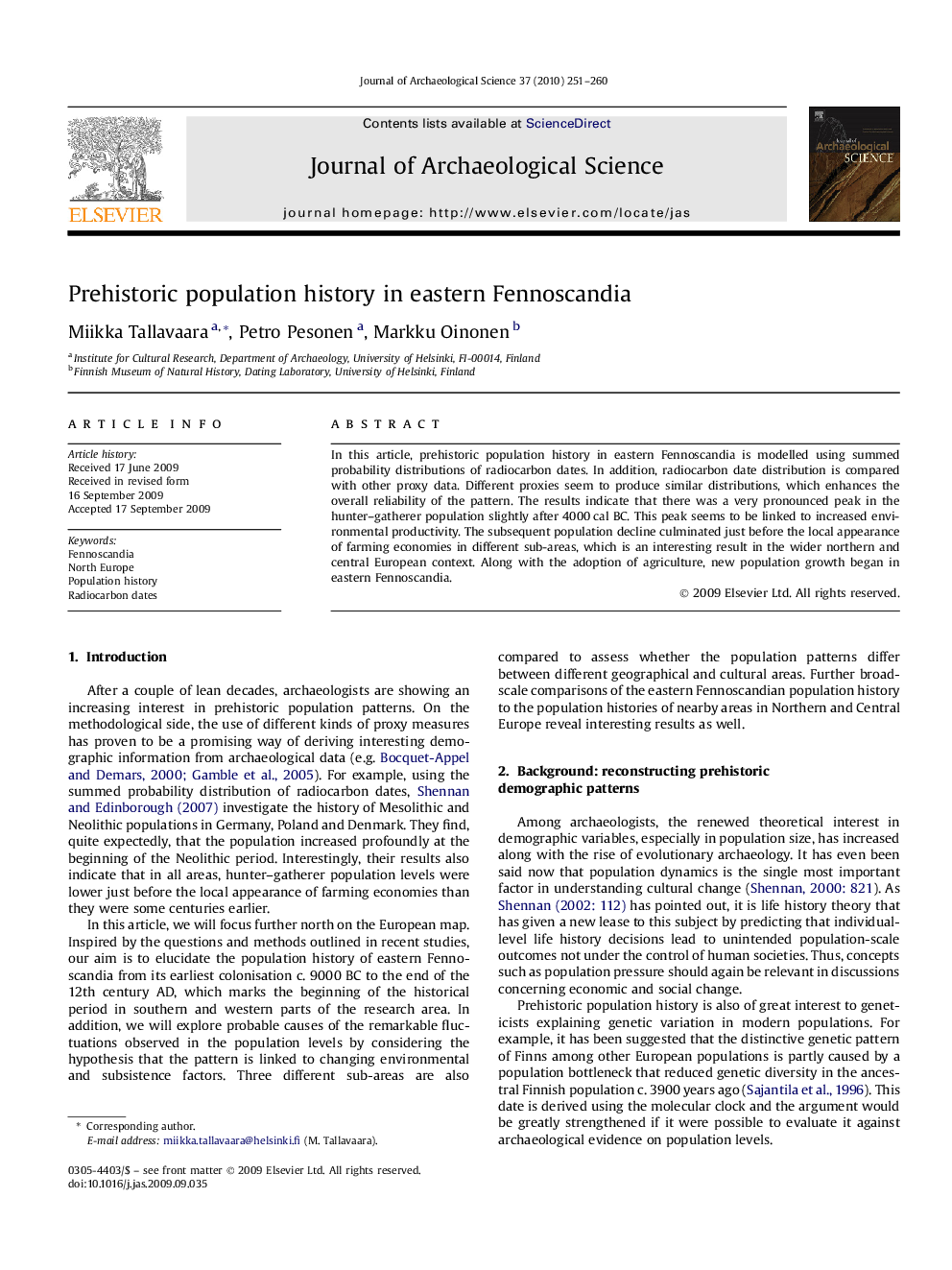| کد مقاله | کد نشریه | سال انتشار | مقاله انگلیسی | نسخه تمام متن |
|---|---|---|---|---|
| 1036555 | 943890 | 2010 | 10 صفحه PDF | دانلود رایگان |

In this article, prehistoric population history in eastern Fennoscandia is modelled using summed probability distributions of radiocarbon dates. In addition, radiocarbon date distribution is compared with other proxy data. Different proxies seem to produce similar distributions, which enhances the overall reliability of the pattern. The results indicate that there was a very pronounced peak in the hunter–gatherer population slightly after 4000 cal BC. This peak seems to be linked to increased environmental productivity. The subsequent population decline culminated just before the local appearance of farming economies in different sub-areas, which is an interesting result in the wider northern and central European context. Along with the adoption of agriculture, new population growth began in eastern Fennoscandia.
Journal: Journal of Archaeological Science - Volume 37, Issue 2, February 2010, Pages 251–260